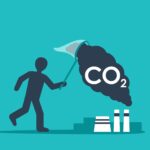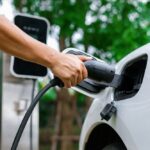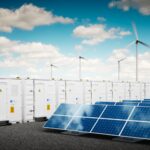- Solution Type: Implementation Model
- Barrier: High water consumption leading to increased operational costs and environmental concerns, particularly in drought-prone California.
- Solution: Implementation of multiple portfolio-wide water conservation measures, including toilet replacements, installation of domestic hot water heat pumps, water leak detection systems, and participation in utility-administered efficiency programs.
- Outcome: Achieved a 27% portfolio-wide reduction in water usage from the 2018 baseline, saving over 24,750,000 gallons of water and $772,000 in water bill costs annually.
Overview
Tenderloin Neighborhood Development Corporation (TNDC) has implemented a comprehensive water conservation strategy across its portfolio of affordable housing properties. This initiative resulted in annual savings of over 24 million gallons of water, achieving a 27% reduction from the 2018 baseline year. As a result, TNDC exceeded its Better Buildings Challenge goal of reducing water use intensity by 20%. These water savings have resulted in a $772,000 annual reduction in water bills. These financial savings are being reinvested into additional building upgrades to improve tenant comfort and generate additional cost savings.
This initiative is a case study in effective water resource management for multifamily portfolios, which is critical in areas which frequently face drought and wildfire risk. It is also aligned with the San Francisco Public Utilities Commission’s goal to reduce water usage by 15% from a 2020 baseline.
Process
TNDC recognized that achieving its water savings goal required dedicated resources and a multifaceted approach. TNDC dedicated 20% of two staff members’ time to focus on water savings. This team identified and evaluated multiple strategies based on their expected impact on water savings, return on investment (ROI), and positive impact for residents.
Following this analysis, TNDC ultimately completed the following portfolio-wide water-saving measures:
- Toilet Replacements: toilets are responsible for the largest percentage of water usage in a home, according to the EPA. TNDC replaced 2,405 1.6 gallons per flush (gpf) toilets with 0.8 gpf models across 33 properties over five years.
- Efficiency Programs: TNDC participated in the Energy Savings Assistance Program administered by Pacific Gas and Electric Company to install low-flow showerheads and faucet aerators on a rolling basis at eligible properties at no cost.
- Water Leak Detection: Many of TNDC properties include older buildings that are prone to leaks, which can cause high water bills, expensive repair costs, and increased insurance fees. To mitigate this issue, TNDC’s risk management and capital improvements teams collaborated on a project in 2023 to install water intrusion sensors connected to monitoring software at all 43 properties in operation. This system detected water leaks and notified site staff which units were experiencing leaks in real time, allowing maintenance staff to respond immediately to fix the issue and prevent floods.
- Domestic Hot Water (DHW) Heat Pumps: TNDC installed DHW heat pumps at seven properties, utilizing grants, rebates, and incentives to cover the majority of project costs. In addition to cutting down on energy usage, these heat pump systems reduce water usage as well. Thermal balancing valves maintain a constant water temperature, reducing the need to let water run while waiting for it to heat up. Recirculation pumps keep hot water circulating through the pipes, providing instant hot water at the tap and reducing water waste.
TNDC considers water conservation projects as “low-hanging fruit” compared to other energy-saving and capital improvement initiatives. This is because these projects have short ROI periods and can be implemented with minimal disruption to tenants or building operations. These measures also did not require city permits, helping minimize installation times.
Post-implementation monitoring is an important element to ensure these measures continue to save water and utility costs; TNDC’s water savings team is able to analyze project performance and pinpoint any unusual spikes in usage. They use this data to notify the site when they see anomalies, allowing them to work with staff to find and quickly remediate the source of any leaks. This activity is a low lift for the team and easily pays for itself in terms of long-term cost, time, and water savings.
Financing
TNDC utilized a variety of internal and external funding sources to implement water efficiency upgrades:
- Toilet Replacements: Funded by TNDC at a total cost of $940,157, with an average ROI of roughly 15 months.
- DHW Heat Pumps: Total cost of $4.3 million, offset by $3.7 million in grants, rebates, and incentives, resulting in a net cost of approximately $600,000 to TNDC.
- Water Leak Detection & Monitoring Software: Funded through the property operation budget and managed as a capital improvement project, costing roughly $2.5 million.
- Efficiency Programs: Implemented at no cost to TNDC through the Energy Savings Assistance Program.
Measuring Success
TNDC’s water savings team develops quarterly variance reports and presents findings internally. These reports compare costs and water, electricity, and gas usage for the current quarter with the same quarter of the previous year to highlight areas for improvement and keep track of rate changes. As TNDC began prioritizing water conservation projects, it immediately saw positive results in usage and cost savings, which helped garner additional internal support for continued investment in water efficiency measures.
To inform residents of the upcoming toilet replacements within their units, TNDC provided handouts and notices with information on the new toilets and what they can expect from the equipment change-out.
Success of TNDC’s water savings projects was evaluated by:
- Degree to which resident needs and comfort are supported (e.g., immediacy, consistency, availability of hot water)
- Reduction of water usage (gallons)
- Costs saved for TNDC and residents (e.g. reduced operating/maintenance costs/ tenant bills)
Outcomes
Through these comprehensive water efficiency improvements, TNDC exceeded its portfolio-wide Better Buildings Challenge water goal, achieving a 27% reduction in water use from a 2018 baseline. TNDC calculated water savings at the 33 properties that received new toilets and the full suite of water savings measures, which equated to 24,751,506 gallons of water and $772,000 in water bill savings in 2024 alone. These savings allowed TNDC to reinvest funds into building improvements, enhancing the quality of life for tenants. This comprehensive project provides a replicable pathway for other multifamily organizations to follow when implementing portfolio-wide water efficiency improvements.
![]() This column originally appeared on the Better Buildings website.
This column originally appeared on the Better Buildings website.
Better Buildings is an initiative of the U.S. Department of Energy (DOE) designed to improve the lives of the American people by driving leadership in energy innovation. Through Better Buildings, DOE partners with leaders in the public and private sectors to make the nation’s homes, commercial buildings, and industrial plants more energy-efficient by accelerating investment and sharing successful best practices.





